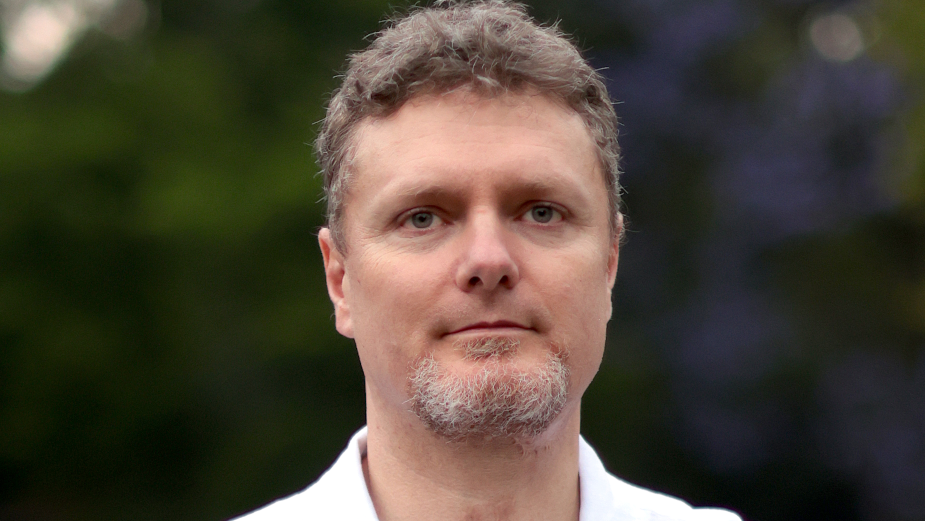
Kamen Markov’s Career-Long Love Affair with the ‘Big Box’

As a Flame artist, Kamen Markov spent the formative years of his career in his native Bulgaria, honing his craft on music video, commercial and installation projects.
In search of more opportunities to improve his VFX craft, he left for Mexico in 2004 where he worked with an impressive list of creative talent, including the likes of Fred Clapp, Jorge Aguilera and Oliver Castro.
He joined the MPC team in London in 2010. Since then he established himself as one of the company’s leading VFX supervisors within commercials and worked on numerous high profile and award-winning campaigns including Lego, Visa, Vodafone, Audi, Carlsberg, Sony, Cravendale and John Lewis among many others. As a visual effects supervisor and senior flame artist, Kamen collaborated with some of the film and advertising industry’s most revered directing and creative talent such as Traktor, Academy Award winner Robert Stromberg, Sam Brown, Daniel Kleinman, Jonathan Glazer and Seb Edwards.
As he begins a new career chapter as a creative director at Framestore, LBB’s Alex Reeves caught up with him.
LBB> Where did you grow up and what were your passions as a youngster?
Kamen> I was born in Sofia, Bulgaria. However, I grew up in the beautiful Bulgarian city Ruse on the right bank of the Danube. Known for its 20th-century Neo-Baroque and Neo-Rococo architecture. Later I moved back to Sofia where I stayed until I moved to Mexico City. As a child my biggest passion was reading. Anything, everywhere, anytime really. The bigger the book, the more the fun. I was also really interested in art, acting in theatre and football. In my teens my focus shifted 100% into riding freestyle BMX. It was my world.
LBB> When did you first start to consider a life in filmmaking?
Kamen> I was in my early 20s and my older brother, who is a DoP and a director, made a name for himself bringing MTV-style music videos to the local market. We managed to scrape a home computer with a Matrox video card capable of editing and running AfterFX. At the time I was fascinated by industrial design - visual effects and editing are a similar combination of technical and creative skills. My mum made a career as a journalist and talk show host on national TV. Growing up in that environment must have been a trigger too.
LBB> And why did visual effects grab your interest?
Kamen> I don’t think it was the visual effects specifically, not on their own at least. What sparked the passion was a love for beautiful moving images. A great looking image, representing and adding to a story touches you every single time. Visual effects just happen to be a really satisfying way to achieve those pictures. If I was to mention a singular event that inspired me to be part of this, it has to be my first time watching ‘Lawrence of Arabia’ by David Lean and captured on film by Freddie Young.
LBB> How did you first get your break in VFX?
Kamen> I started in TV as a motion graphic designer. Shortly after that I went on to work as editor and VFX artist for a newly set up studio in my hometown, TopForm studio. I was very lucky the team had all the right ideas about how post-production should be done, with up-to-date equipment and crucially Flame. That was where magic started to happen. I simply fell in love with the big box. And I mean it in a very literal way. I gave the machine a name and talked to it sometimes. A bit crazy I know.
LBB> What was it like starting out in Bulgaria, then moving to Mexico City before settling in London at MPC?
Kamen> My start in Bulgaria was what made me who I am in so many ways. It was very robust, I learnt on the job, and found my own solutions to challenges. There was barely anyone to learn from or compare to. It builds a healthy appetite for problem solving, which I try to preserve while working for big places like MPC or Framestore where help comes easier. Looking for room to grow further I started looking around. I stumbled upon a new place in Mexico City, The FilterFX. They added so much creative value to jobs with modest budgets. This felt close to my heart, plus Mexico was part of the fantastic world of books I grew up with, so I made the leap and moved. It was a great decision. My confidence and reputation developed quickly, working with some of the top advertising directors around such as Fred Clapp, Jorge Aguilera, and Oliver Castro. Clients often referenced treatments to a job done in London, LA or NY – I was asking myself ‘why aren’t I doing those jobs myself? How do I compare to the artists in the leading markets?’ In 2009 I packed a couple of bags, rented a small flat on Rathbone Place near Soho and started looking for work in London. It took some time, but eventually I landed a full-time job as a Flame artist at MPC.
LBB> Did the culture of post houses differ?
Kamen> I tend to focus quite squarely on my work and company culture never really impacted me much. I was fortunate to do a good job and always felt somewhat protected to do what I do best. If anything, the market and the clients are very different between Sofia, Mexico City and London. London is more competitive. You have to be doing your best thinking every single time. However, the scale, the scope, the responsibility changes significantly.
LBB> What work over your whole career so far are you most proud of and why?
Kamen> Such a hard question. Doing a good job is really important to me regardless of the size and profile of a project. Some projects that have been important for my career, such as my first job as supervisor and lead Flame for MPC, where I worked on one of my first jobs which was the first ‘Cats With Thumbs’ for Cravendale directed by Ulf Johanson. I don’t believe anyone expected much, but it went on to pick up a lot of attention. After this I worked on my first ad with Traktor for T-Mobile. In a single weekend we had to squeeze nearly a month worth of post-production. And we did! Both jobs were significant for me as they were the start of long lasting creative relationships with the directors. Another very special project was ‘The Boy and the Piano’ for John Lewis with Seb Edwards. It was a high pressure project with a seemingly impossible task of recreating a digital human face. A job that could have gone very wrong, very easily, but together with the CG team lead by Anthony Bloor we managed to pull it off.
LBB> Probably my favourite work on your whole reel is the Cravendale 'Cats with Thumbs' work. What were the big considerations for you during those films?
Kamen> I worked on two separate spots for Cravendale’s ‘Cats with Thumbs’. The first one with Ulf Johanson and the second one with Traktor. The approach was slightly different for each film. The first one I did without any CG. We used some clever in camera plating solutions and a lot of creative and artistically LED compositing. I think the biggest thing to consider was to stay truthful to Ulf’s visual and directing style. As it was all created by practically shot elements, it gave the film this unique, cosy yet slightly quirky look that is easy to relate to as a viewer. Not having any CG helped to connect with the little felines instead of thinking about visual effects. Yet, the post-production needed to be polished to a level where when you look at it, you don't think about VFX. The second ad (‘Catnapped’) came on the back of the success of the first one. We applied the knowledge we acquired and added a little bit of CG paws this time. I really enjoy looking back at both films because as a compositor they were dream projects to work on.
LBB> And that second one was with Traktor, who you've worked with a lot. What's that relationship like?
Kamen> I am a big fan of building a good relationship with directors / clients. Establishing ongoing trust and an understanding of each other’s ways of working and creative drives. We all want to do our best work, and this helps to get the best out of everyone quickly. Traktor are very special. They are obviously massively successful directors that are enduring the test of time and keep going so strong. Since day one I keep considering my relationship with them as the best compliment I can possibly ask for. They have a really refreshing appreciation about the role of the visual effects in film with an understanding that often goes well beyond the fundamentals. We discuss projects at very early stages and try to help each other at each step of prep, shoot and post until delivery.
LBB> What's your favourite way to work with directors? What are your favourite traits in a director?
Kamen> I like it when we are invited into the process early, as we can tailor our creative solutions to get the best out of an opportunity both within the post production, but also while shooting or editing an ad. While I absolutely love wild creativity and throwing the rule book out of the window, I think directors that are willing and capable of very strong preparation tend to end with the best looking product at the end of the process.
LBB> Now you've joined Framestore. What are you most excited about getting your teeth into as a creative director there?
Kamen> I’m always hungry to expand my knowledge, and I can’t wait to learn from the award-winning talent within Framestore whilst also bringing my unique experience to the team.













